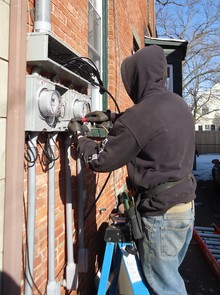Problems Found During Preventive Maintenance
One of the aims of preventive maintenance is to find problems before they get serious. However, if you find a significant problem, it's important to make sure the problem gets noted within your records.
For example, suppose you're performing a regular oil change on a car and discover a headlight broken due to vandalism. If you just repair the light and write it up as part of the regular oil change, you lose what might be valuable information. After all, many companies like to track losses due to vandalism; if you know the exact costs of vandalism, you can make informed judgments about hiring new security guards or implementing other security measures.
Similar situations are common: you're inspecting one type of problem, you notice something else at the same time, and you make an appropriate repair. It's important that you don't let information about the repair fall between the cracks.
If you're using a CMMS, you must choose how you'll write up what was done. In our broken headlight example, you could just add a comment to the preventive maintenance work order saying, "I also fixed a headlight." But side comments are usually easy to overlook and hard to incorporate in analysis reports. It would probably be better to create a new work order for the headlight so it's separate from the preventive maintenance job. This work order can include any pertinent information. In particular, you might use a closing code or some other mechanism to record that the damage was due to vandalism. This puts the important information into your CMMS system and makes it easy to identify when you're creating analysis reports.




